A curtain of fog blanketed our route as we traversed the Po River Valley and crossed into the Emilia-Romagna region on our way to Ravenna. The purpose – to see some of the finest Byzantine mosaics outside of Constantinople, present day Istanbul, which was once the seat of the Eastern Roman Empire. Not to be outdone, Ravenna’s golden mosaics rival Constantinople’s and were created in the 5th century when Ravenna was the capital of the Western Roman Empire after Rome’s demise. Eight churches have been recognized by UNESCO for their cultural significance as “Early Christian Monuments of Ravenna.” Most of them are credited to a building boom by Justinian I after a reconquest of the city from the Ostrogoths in 535 that solidified Byzantine power on the Italian Peninsula along the Adriatic coast.
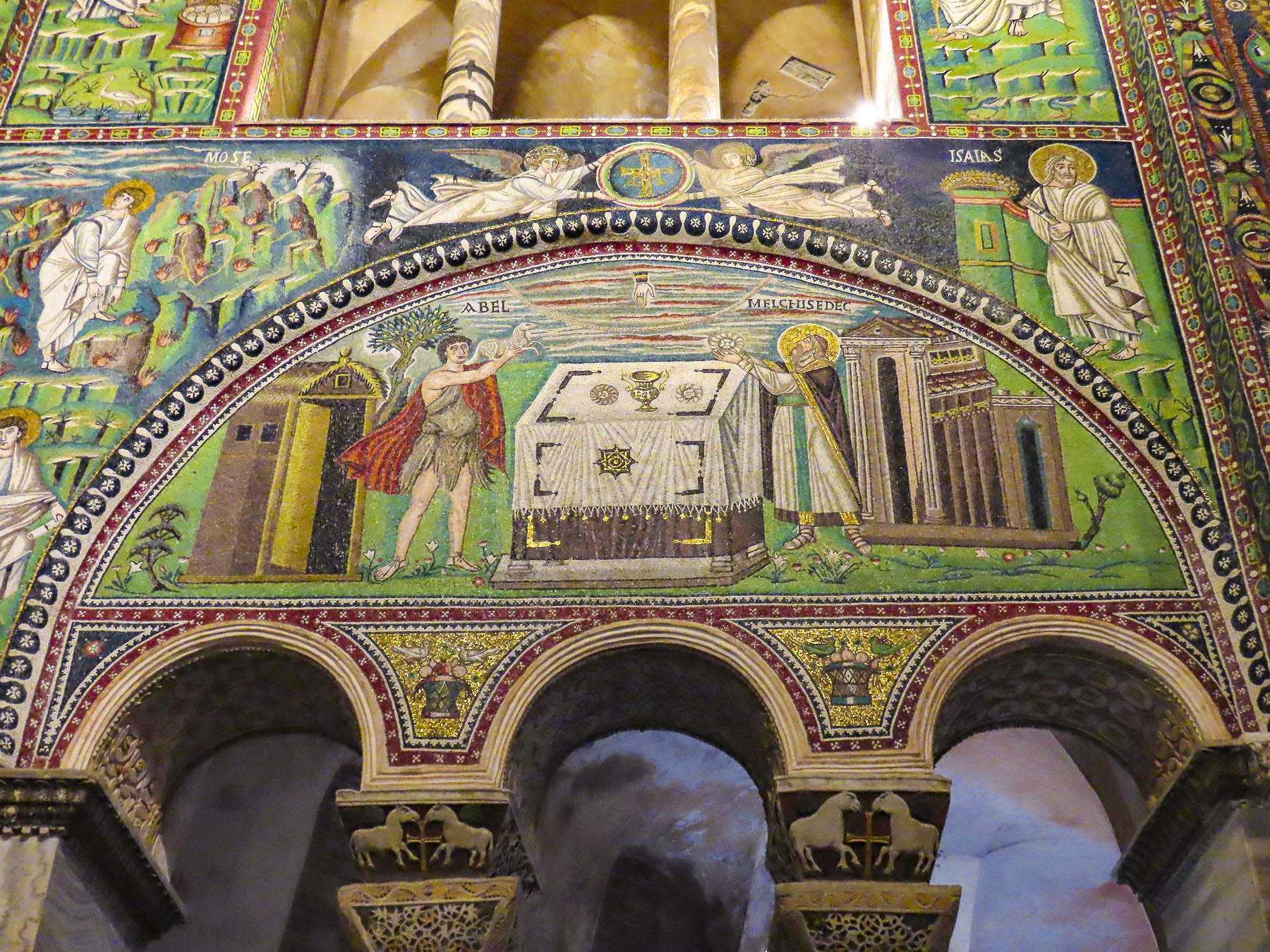
The valley had been the breadbasket of Northern Italy for several millennia when the Etruscans and Romans first started to drain the wetlands to expand areas for cultivation to support a growing populace aligned with city-states of the region. The spring floods from the snow melt of the Alps, Apennines and Dolomite mountain ranges replenish the valley’s fertile soil every year before pouring into the Northern Adriatic Sea.
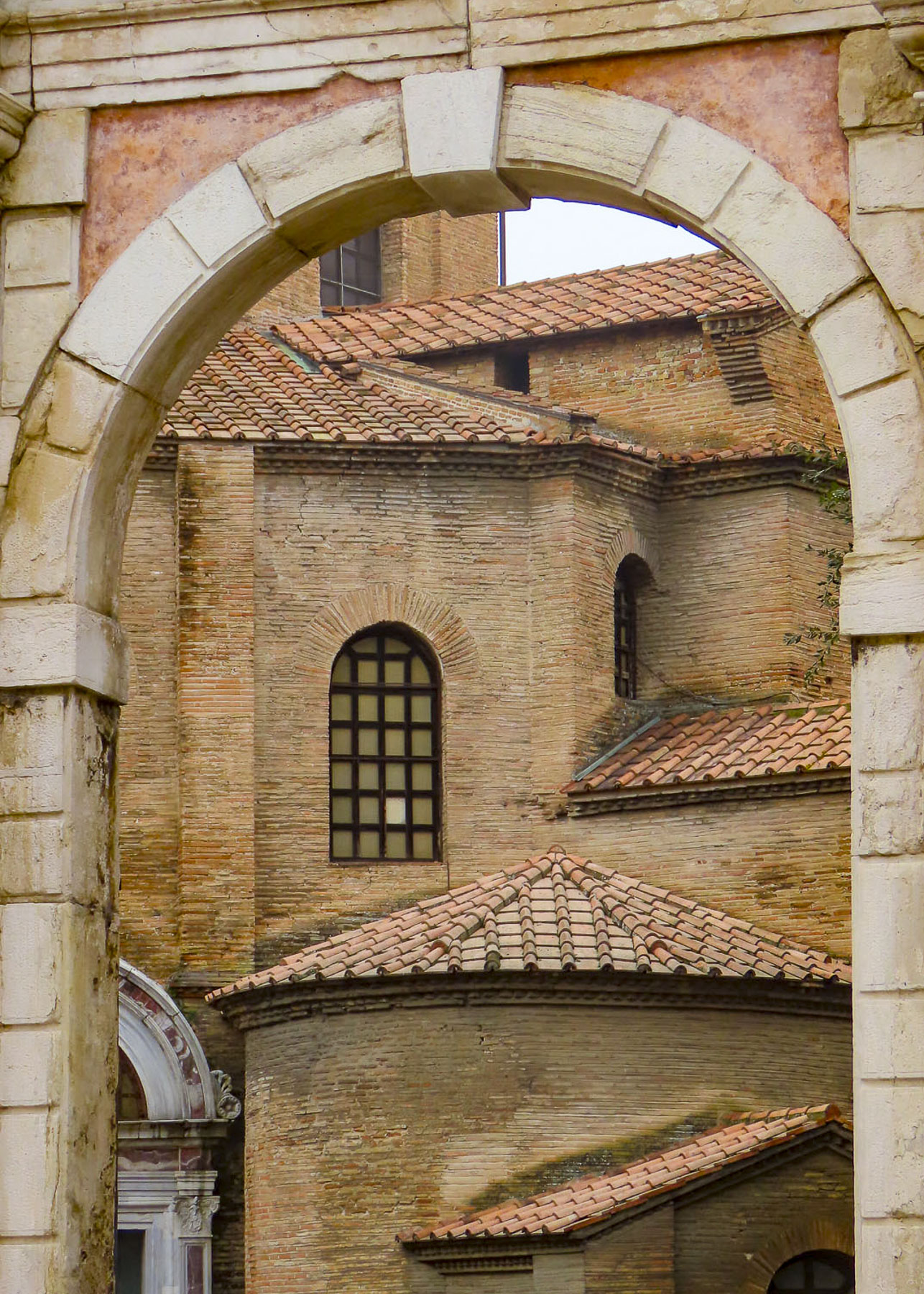

With the belief that the valleys are always greener on the other side of the Alps, invading armies contested the area for centuries. French kings, German tribes, Galls, Hannibal with eighty war elephants, Goths, Attila the Hun, Papal armies, and Napoleon have all wanted this green acreage, and were willing to shed blood for it.
The fog had lifted, but it was still a moody day as we entered the Basilica di San Vital. The unique octagonal church was one of Justinian’s first commissions to celebrate Christianity in the city on a grand scale. The splendor of its lofty mosaics that rise from the floor, on all sides, to encompass the domed ceiling are dazzling. The golden tiles warmly reflecting the ambient light even on a dreary day.

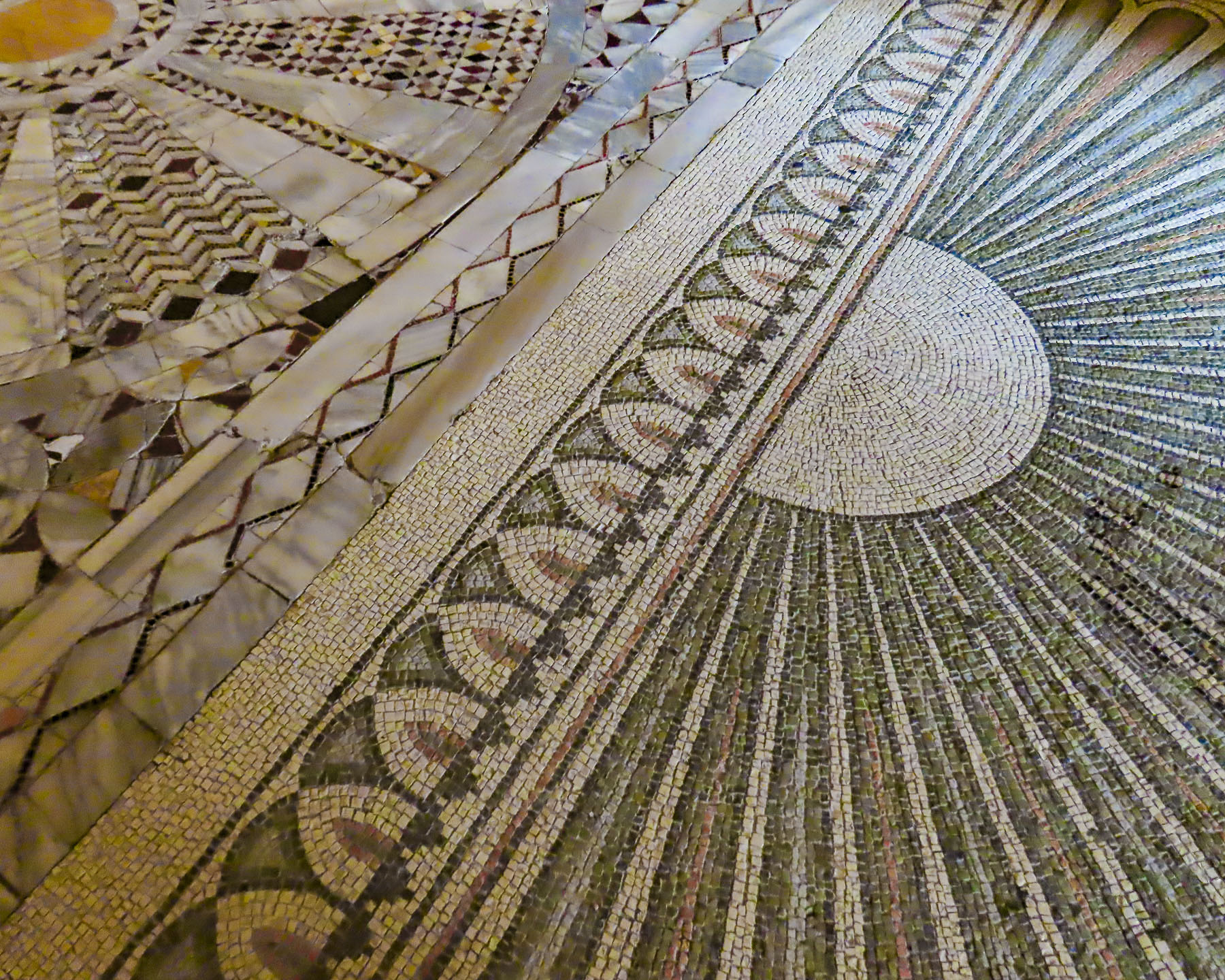
Byzantine mosaics evolved from the Greek use of different colored river stones to create sturdy designs in ancient roads. Durable marble was preferred for its vast array of colors and was used for interiors floors in palaces. Lasting centuries, these intricate designs are often referred to as “eternal pictures.”
The Byzantine artists’ innovation was to use physically lighter and more fragile material such as different colored glass pieces and mother of pearl, along with incorporation of gold and silver leaf. The color palette expanded with the refinement of glazed tiles.

A short distance behind the basilica stands the Mausoleo di Galla Placidia, intended as the final resting place for Teodosius the Great’s daughter. It was never used as a tomb, as she died in Rome. The small, modest brick structure is designed in the shape of a Latin cross and is inspirationally decorated as a “prelude to paradise.” A surprisingly intimate and tranquil space, it is one of the oldest religious monuments in Ravenna dating to 430 AD.



A short walk across town, the Cattedrale della Risurrezione di Nostro Signore Gesù Cristo or Duomo of Ravenna, the Baptistery of Neon, and the Archiepiscopal Museum of Ravenna all share the same campus. Though considerably newer, the 18th century Duomo is built over the ruins of an early fourth century church and retains several early side chapels and fifth century sarcophagi.

Behind the cathedral the former bishop’s residence has been converted into a museum displaying a diverse collection of religious relics. The highlight though was the exquisitely mosaiced sanctuary, the Chapel of St. Andrew. It was built in 495 AD for the private use of Ravenna’s archbishops.


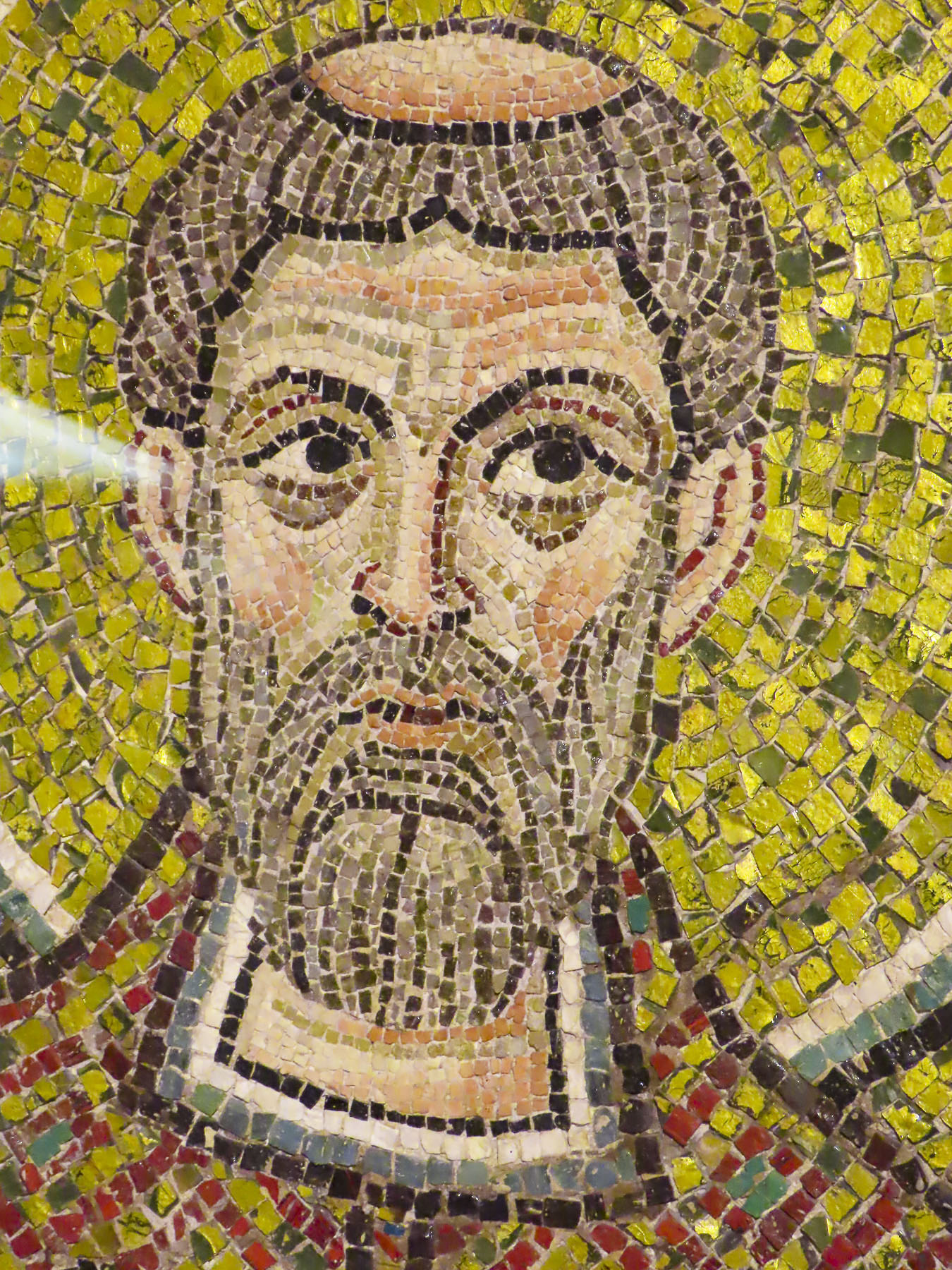
The museum directly behind the cathedral was also interesting. with its diverse collection of religious relics and an exquisite private chapel for the bishop.

The real reward for the trek across town was the early fifth century Baptistry of Neon. The octagon-shaped brick building appears to have settled into the ground, but in actuality, centuries’ worth of construction detritus from earlier settlements in Ravenna have raised the surrounding terrain ten feet since the structure was built. This necessitates the occasional raising of the entrance.
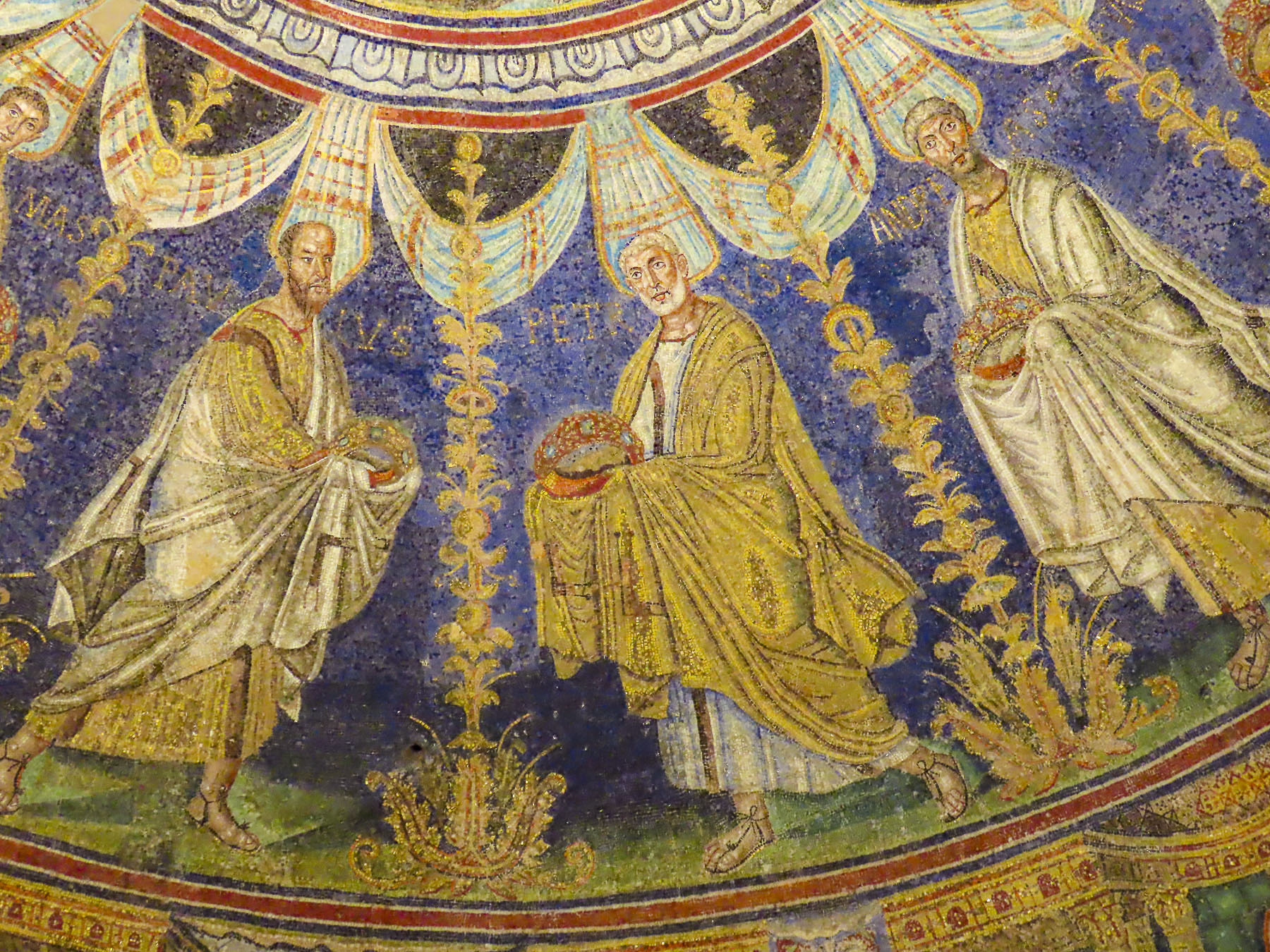

At the baptistry it’s all about the magnificent mosaics that adorn the dome. Above arched windows, the center medallion features John the Baptist christening Jesus in the River Jordan, followed by an encircling outer ring that depicts the twelve apostles. Astonishingly, most of the original mosaic work survives and is still intact. During a minor 19th century restoration, a mosaic artist freelanced with creative license and added the bowl that St. John is using to pour water – a scandal at the time.

The tall ridge of Monte Titano rose above the gentle hills of the Emilia-Romagna countryside surrounding San Marino like a tall ship’s white sail on the ocean; its three fortress towers mimicked the crow’s nest atop a schooner’s mast. The towers served the same purpose: as lookout posts, to spot any approaching threat. They have served the Republic well since its founding in 301 AD, when the Christian stonemason Marinus, who was later beatified as San Marino, fled Rimini to avoid the Diocletianic Persecutions. Also known as the Great Persecution, it was the last and harshest repression of Christianity in the Western Roman Empire before it was accepted as the state religion in 313 AD. The rugged terrain of the mountain provided safe refuge for the small community of followers who built a small chapel and monastery. As the community grew, a governing system evolved that included representation of each family by the head of the household in an assembly called the Arengo. Representatives were summoned to the meetings by the ringing of the church bell. This eventually changed to a Grand and General Council which elected two Captains Regents for six-month terms. In 1861 the tiny constitutional republic bestowed honorary citizenship on Abraham Lincoln. In his acceptance letter he wrote, “Although your dominion is small, your State is nevertheless one of the most honored, in all history. It has by its experience demonstrated the truth…that Government founded on Republican principles is capable of being so administered as to be secure and enduring.” On the 150th anniversary of Lincoln’s death, in 2015, San Marino minted a ten-euro commemorative coin that highlights the great orator’s words to the tiny republic: “Great and Good Friends.”



Giuseppe Garibaldi and a band of followers received refuge in San Marino before the tide of the unification movement turned in his favor. In the 1870’s, San Marino was asked to join with the rest of the Italian peninsula. However, the good will engendered by their gracious treatment of Garibaldi prevented the tiny republic from suffering invasion after they politely declined.
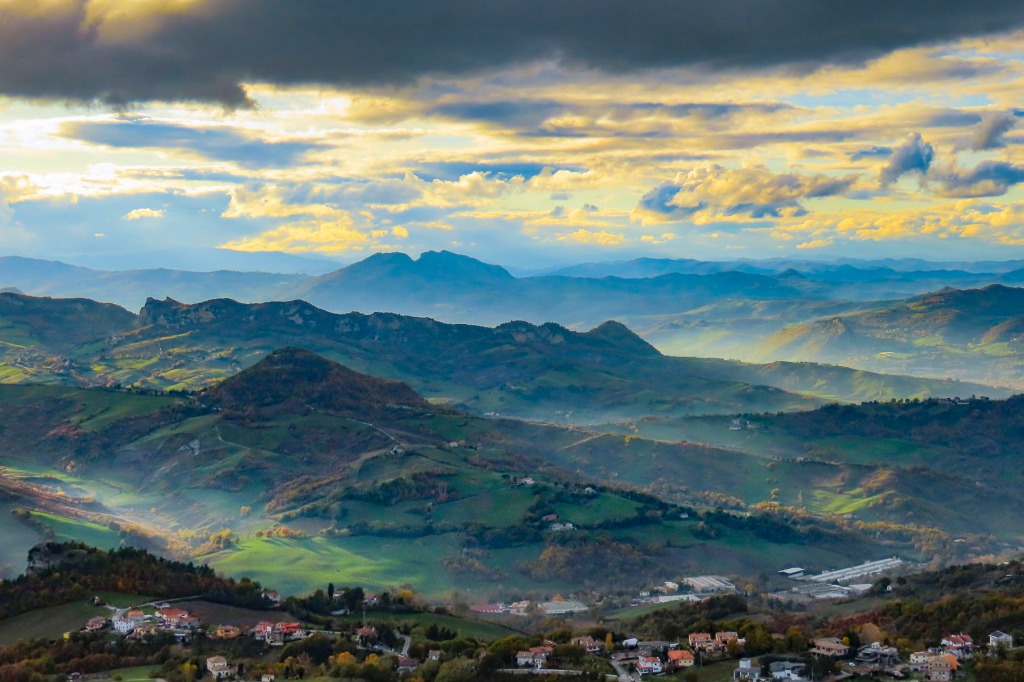
Along with Andorra, Monaco and Liechtenstein, San Marino is a surviving example of a medieval city-state that was once quite common throughout Europe and especially the Italian peninsula. In such esteemed company, one would expect the place be expensively exclusive. That would have held true if we had visited during the high season. But that’s not the case in November when cold winds whip across Monte Titano. With some internet sleuthing, Donna found us a great rate at Hotel Rosa San Marino.

The last vestiges of autumn colors still clung to the trees that lined our serpentine route up the mountain that ended at one of the ancient city gates through a crenelated wall. The hotel had assured us that parking was available on site when we made the reservation several months prior, but a traffic sign warned that vehicles were prohibited and to proceed no farther. With a quick phone call to the hotel they confirmed that they would register our car with the city and that we could drive through the gate and into the historic district without any worries.

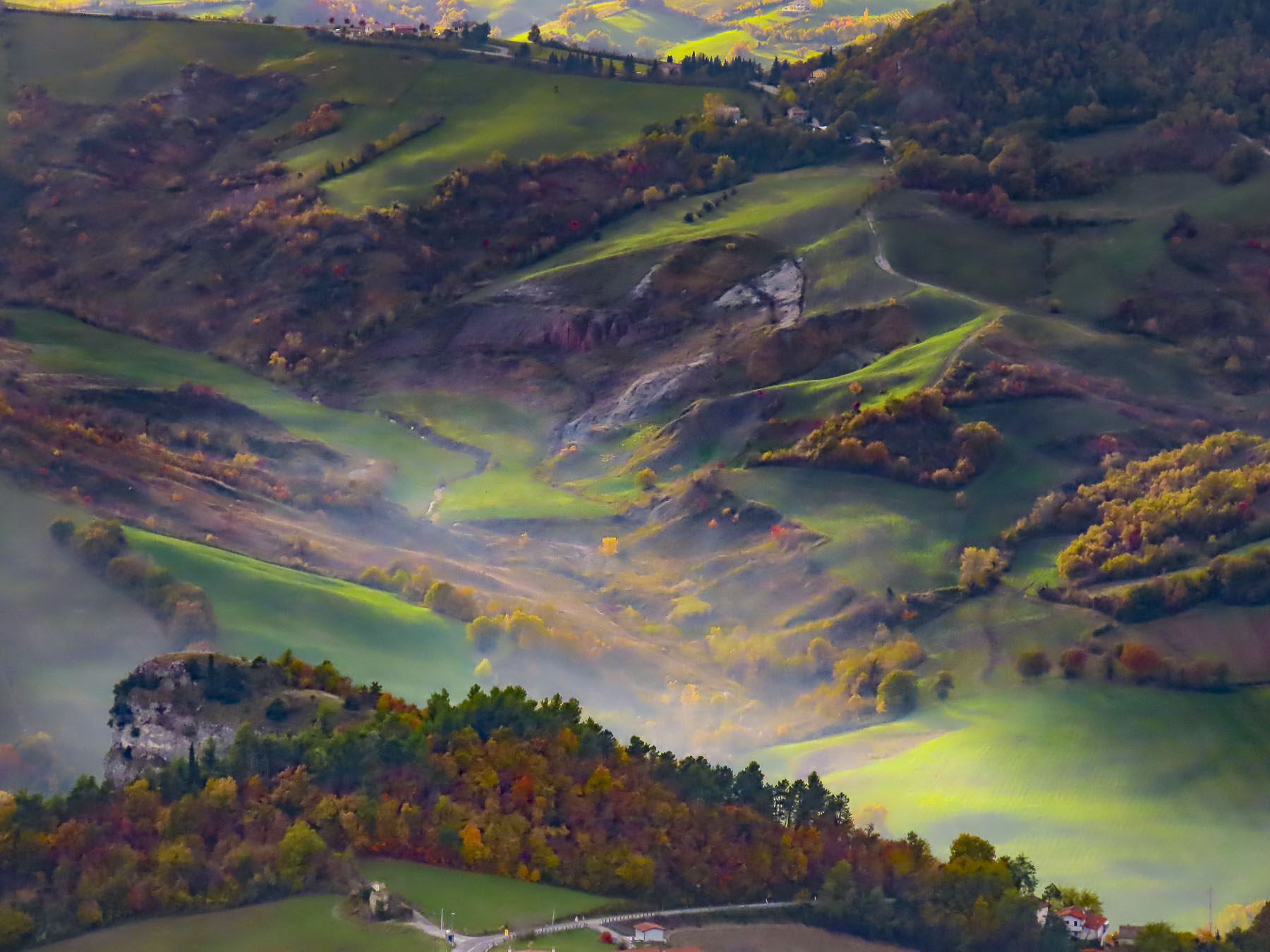
With a few tight turns between buildings, we drove higher and literally parked beneath the Guaita Tower, San Marco’s first tower and iconic fortress built in the 11th century. Only a few steps from the paths along Monte Titano’s ridgeline, the hotel was in an ideal location to explore the mountaintop city and had wonderful views from its balcony.

The next morning, we braved the chill wind and climbed to the top of the tower. Donna loves these vertical expeditions. Steep ladders, crumbling fortress walls, and cliffside trails don’t intimidate her. I on the other hand have a healthy fear of heights and am only emboldened with a camera in hand in order to pursue the best photo ops. Spots along the ridge trail connecting the towers were challenging for me, but extremely rewarding for the views.



The panoramic, birds-eye-views from the tower were phenomenal and well worth my shaky knee syndrome while on the ladder to the top. The region of Montefeltro spread out below us toward all the compass points. Northward and south the gentle valleys and hills of Emilia-Romagna were saturated with the earthen tones of autumn. To the east the Adriatic coastline near Rimini shimmered on the horizon and it’s said on the best days you can see the mountains in Croatia. To the west the borders of Tuscany, Marche and Umbria straddled the rugged Appenine mountains around the Regional Natural Park of Sasso Simone and Simoncello. During the day the towers were manned by lookouts for signs of any approaching armies and at night to spot their campfires.

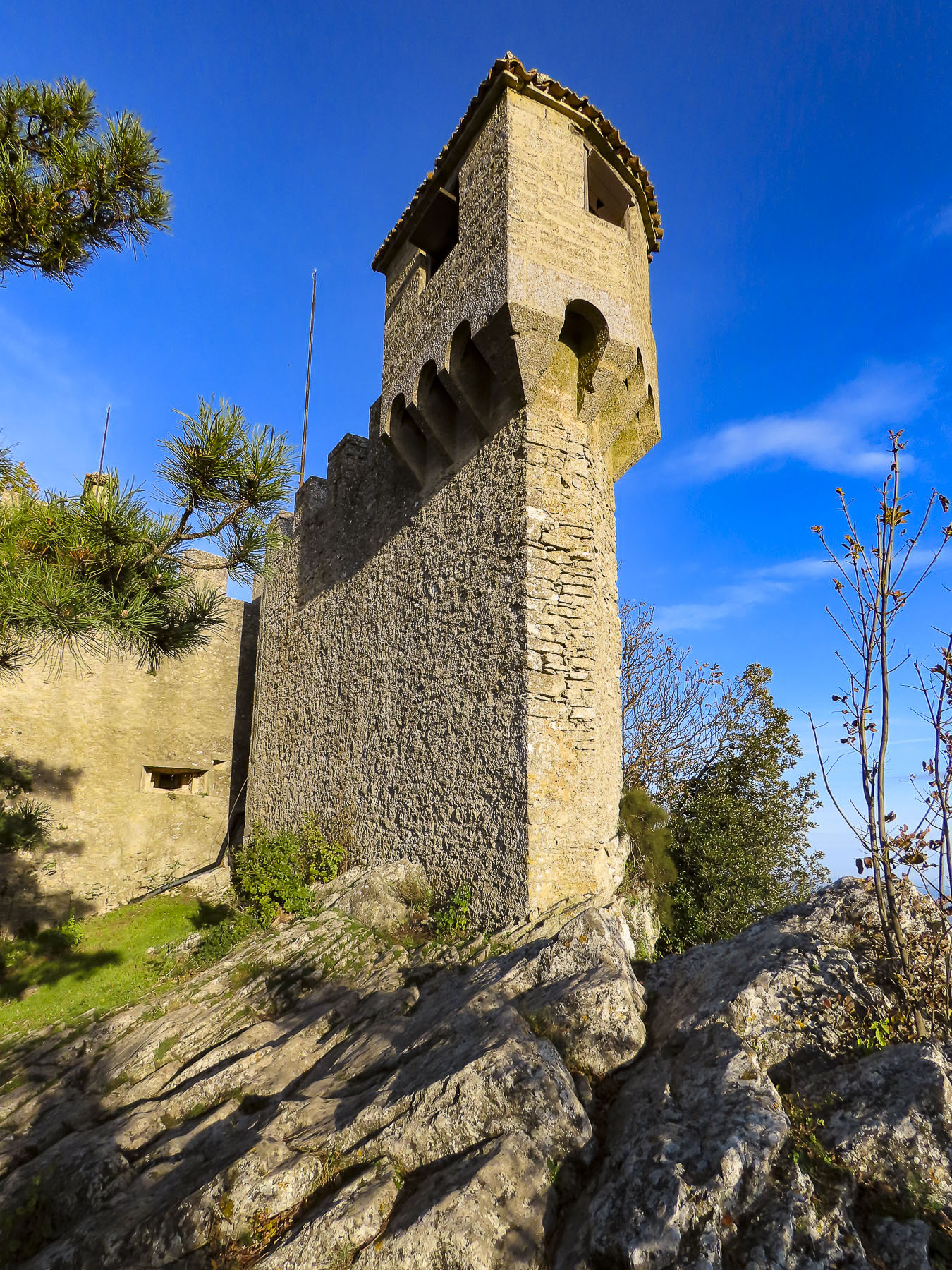
To get to the second and third towers we had to pass through defensive wall that protected the core of ancient village and cross an arched stone bridge, called the Witches Path, Passo delle Streghe, above a deep gorge that divides the ridge. It gets its name from the howling winds that whip through the high, narrow gorge and sound like voices. Allegedly, during the Dark Ages a coven of witches practiced their black magic here. More accurately though, suspected witches in San Marino were thrown to their deaths from the cliff edge. Falesia, the 13th century second tower, was built on the highest point of the ridge (2,425 ft) and used to house a garrison of crossbowmen. It now houses a military museum that showcases ancient weaponry, but was unfortunately closed for repairs during our November visit.



A small door through the Falesia’s outer wall connected to a rugged cobbled path that continued to Terza Torre, the third tower or Montale. The slender 14th century tower stands alone in a wooded area on the bow of the ridge. Built as a lookout tower and prison, the only door to the structure is twenty feet off the ground where prisoners were thrown into one large pit in the tower’s foundation. This tower has never been open to tourists, but the scenery along the trail makes it well worth the visit. Challenging trails off this path circumnavigate Monte Titano and eventually lead to the valley below. The early morning and sunset light on the mountain are totally different and enhance a romantic ambience that is especially rewarding for photographers.


Fortunately, at the other end of the tower path there were many restaurants with indoor and outdoor seating. Opting to eat outside on a breezy day, so that we could continue to enjoy the view, we lucked out and were able to get a table along the cliff edge that was out of the wind. Another advantage to November travel is that merchants are gearing up for Christmas. The town was very pretty with its holiday decorations, and we were just a bit early for the Christmas market, although the cute little cottages were already set up. Donna had fun browsing the shops, and found a nice commemorative: a roof tile with a miniature Christmas scene built into it.
The next morning it almost seemed easier to walk the ridge trail than the steep streets of San Marino’s historic center that were giving our calf muscles a workout.


The Basilica di San Marino and the much smaller Chiesa di San Pietro stand next to each other on Piazzale Domus Plebis. Encompassing the mountain into its structure, Chiesa di San Pietro originally dates to the 600s and has a carved stone recess that legend believes was San Marino’s bed when he first sought sanctuary on the mountain. The basilica was rebuilt in 1826 in a Neoclassical style over the ruins of an earlier 4th century church. In the church, relics of San Marino are safely kept under the altar.


Following narrow lanes we came to the Funivia · Città (Libertà), a cable car, that can whisk tourists up or down the mountain in two minutes, to the parking lot by the Castle of Borgo Maggiore. At this end of the city the wide terrace of Contrada del Pianello offered different yet equally enthralling vistas of the surrounding countryside. The panoramas were especially dramatic late one afternoon, when the sun broke through the cloud cover and cast dramatic shadows cross the countryside.

There is no passport control when you enter San Marino from Italy, which is disappointing if you enjoy getting those passport stamps as reminders of your travels, but for diehards like us, the San Marino Tourist Office, located by the cable car station, will stamp your book for five euros.
San Marino has some interesting public sculpture and the first piece we encountered was in a small park plaza across from the tourist office. The Alle Vittime Del Bombardament, depicts a young woman rescuing a small child. It commemorates the bombing of the country, a neutral territory, in June 1944 when allied forces mistakenly believed the German Army had retreated onto Monte Titano. Two hundred sixty-three Sammarinese were killed during that air raid.



Working our way to the Museo di Stato, the National Museum, we passed the old stone quarry where the country’s crossbowmen, a military unit formed in 1295, once trained. It’s still used by The San Marino Federation of Crossbowmen, a group of ceremonial crossbowmen, musicians and flag-wavers who now entertain at festivals in Renaissance dress. Further along, just before the Palazzo Pubblico, San Marino’s capital building where the Captains Regents and the Grand Council conduct the business of the country, more whimsical sculptures graced a small area with benches.


Piazza della Libertà in front of the Palazzo Pubblico gets its name from San Marino’s own version of Lady Liberty. Sculpted from brilliant white Carrara marble, the Statua della Libertà depicts a striding female warrior, carrying a flag-draped spear and extending a hand in peace, with the three towers of Monte Titano as her crown. It was donated to the country in 1876 by German Countess Otilia Heyroth Wagener, a former Berlin ballerina, who married an Italian nobleman. This was ten years before the French Statue of Liberty was finished in New York harbor.

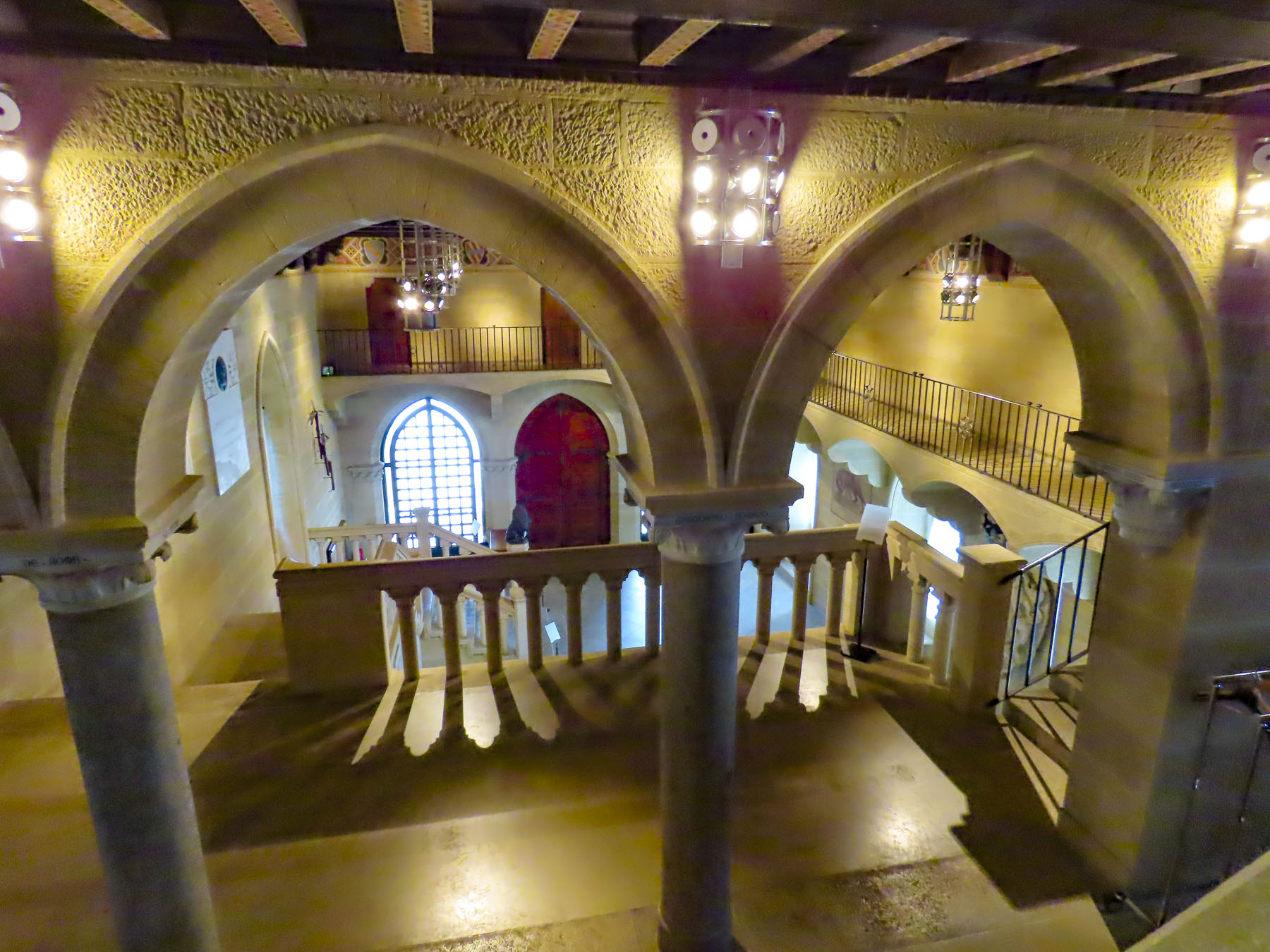
Adjacent to the entrance of the National Museum, the Grande Statua Nudo Femminile or the “Great Female Nude Statue,” (this title creates such an unflattering visualization for a tranquil figure and anyway the sculpture is only 5.5ft tall) by Italian sculptor Francesco Messina stands in front of the Cassa di Risparmio della Repubblica di San Marino, a bank. The bronze was purchased to celebrate the bank’s 100th anniversary. I can just imagine the discussion around the board of directors table, “Profits are up this year, we should invest.” “Yeah, big nude sculptures are symbolic of banking success, financial stability!” “One would look good in front of the building.” “Okay, let’s vote.” I’m being sarcastic, of course, though San Marino does have liberal banking regulations and welcomes offshore accounts from wealthy individuals looking to hide their assets.
The Museo di Stato, the National Museum, has an interesting collection of archeological items discovered on Monte Titano and its surrounding territory that spans its early history, along with art and religious items. We were not aware of it at the time, but San Marino offers a museum pass for 8€ that allows you visit all seven of the country’s national museums. It is a very good value.

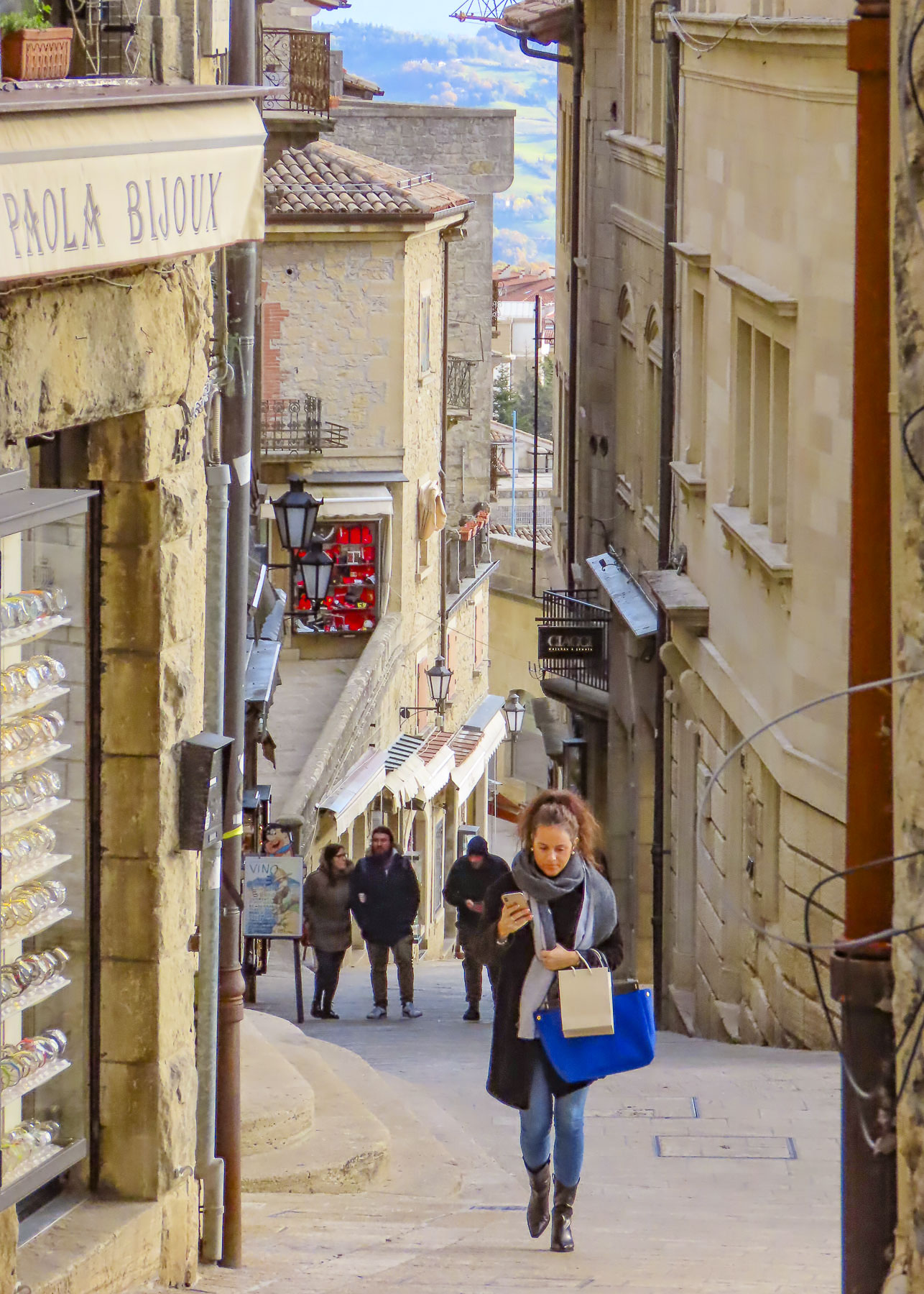
It was a long uphill walk back to our hotel, but well worth it to enjoy the quaint lanes of this unique republic one last time before our departure the next morning. If you are looking for an aerial experience over the Italian countryside without renting a helicopter, a trip up Mount Titano in San Marino might fit the bill.
Till next time, Craig & Donna

